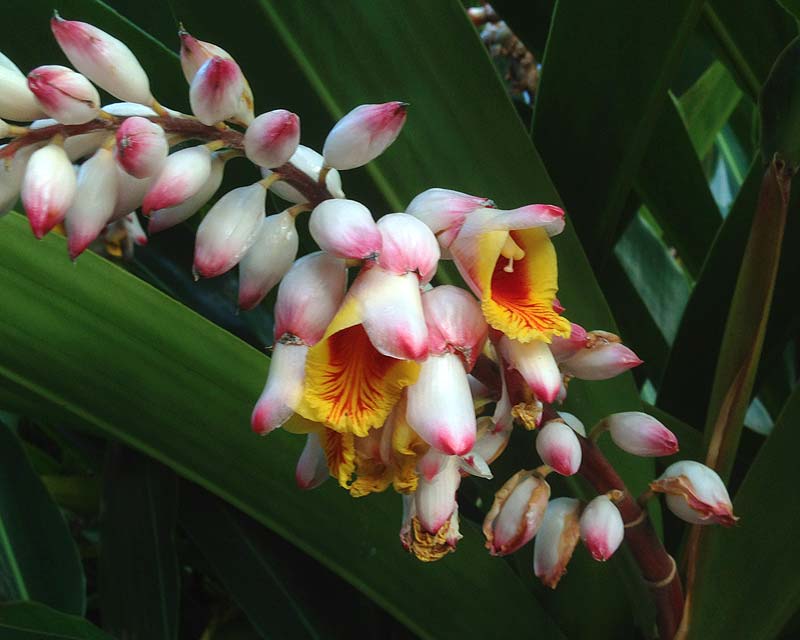
Native to eastern Asia, this plant is a rhizomatous, evergreen tropical perennial that grows in upright clumps 8 to 10 ft (2.4 to 3.0 m) tall in tropical climates. It bears funnel-formed flowers. Flowers have white or pink perianths with yellow labella with red spots and stripes.[3] There are three stamens, but only one has pollen. There is one pistil. The fruit is globose with many striations. In more typical conditions, it reaches 4 to 8 ft (1.2 to 2.4 m) feet tall in the green house, and 3 to 4 ft (0.91 to 1.22 m) feet tall, as a house plant.
The plant's long leaf blades are still used for wrapping zongzi. In Okinawa, Japan, A. zerumbet is known in the local dialect as sannin, or in Japanese as getto. Its leaves are sold as herbal tea and are also used to flavour noodles and wrap mochi rice cakes. Its tea has hypotensive, diuretic and antiulcerogenic properties. Decoction of leaves has been used during bathing to alleviate fevers.[citation needed]. The leaves and rhizomes have been proven effective against HIV-1 integrase and neuraminidase enzymes,[5] and has also shown anti-diabetic effect through inhibitions of formation of advanced glycation end products.[6] Besides, the antioxidant activities of different parts of Alpinia zerumbet has already been reported.
No comments:
Post a Comment